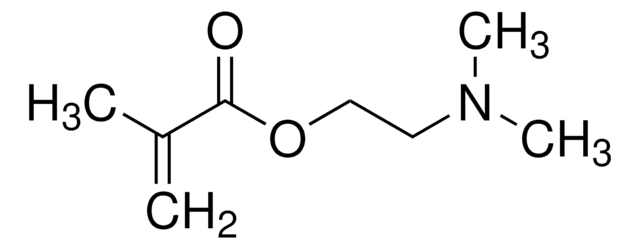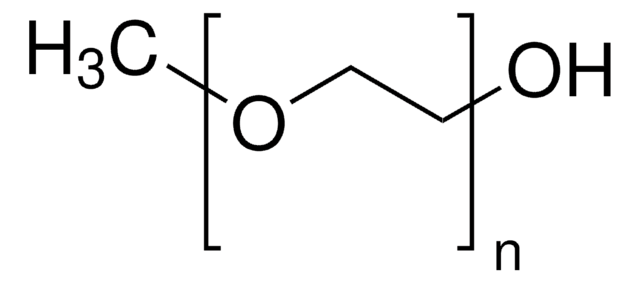907081
Methacrylamide poly(ethylene glycol) amine hydrochloride
average Mn 400, cross-linking reagent polymerization reactions
Sinonimo/i:
Methacrylamide poly(ethylene glycol) amine, PEG amine monomethacrylamide, PEG diamine mono methacrylamide, PEG methacrylamide, PEG monomethacrylamide, Polyethylene glycol
About This Item
Prodotti consigliati
Nome del prodotto
Methacrylamide poly(ethylene glycol) amine hydrochloride, average Mn 400
Stato
liquid
PM
average Mn 400 (by NMR)
average Mn 400
Impiego in reazioni chimiche
reagent type: cross-linking reagent
reaction type: Polymerization Reactions
Colore
pale yellow
Architettura del polimero
shape: linear
functionality: heterobifunctional
Temperatura di conservazione
2-8°C
Applicazioni
Codice della classe di stoccaggio
10 - Combustible liquids
Classe di pericolosità dell'acqua (WGK)
WGK 3
Punto d’infiammabilità (°F)
>230.0 °F
Punto d’infiammabilità (°C)
> 110 °C
Scegli una delle versioni più recenti:
Certificati d'analisi (COA)
Non trovi la versione di tuo interesse?
Se hai bisogno di una versione specifica, puoi cercare il certificato tramite il numero di lotto.
Possiedi già questo prodotto?
I documenti relativi ai prodotti acquistati recentemente sono disponibili nell’Archivio dei documenti.
Il team dei nostri ricercatori vanta grande esperienza in tutte le aree della ricerca quali Life Science, scienza dei materiali, sintesi chimica, cromatografia, discipline analitiche, ecc..
Contatta l'Assistenza Tecnica.
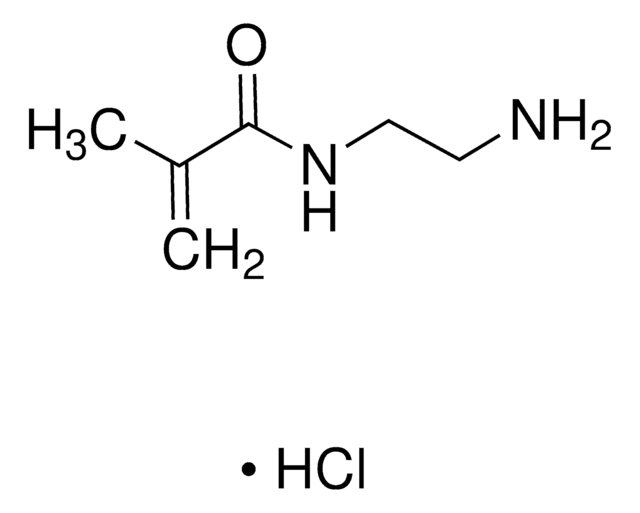
![N-[3-(Dimethylamino)propyl]methacrylamide 99%, contains MEHQ as inhibitor](/deepweb/assets/sigmaaldrich/product/structures/295/145/6b4aae15-7cb5-4b7b-9c06-8e6d24e50951/640/6b4aae15-7cb5-4b7b-9c06-8e6d24e50951.png)
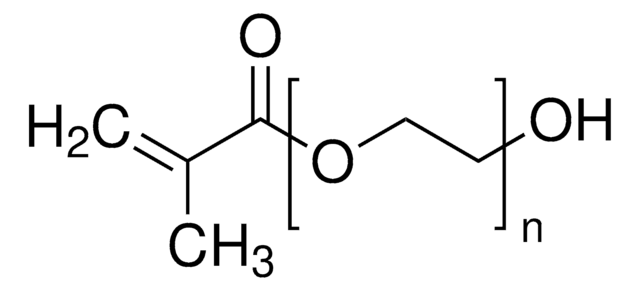
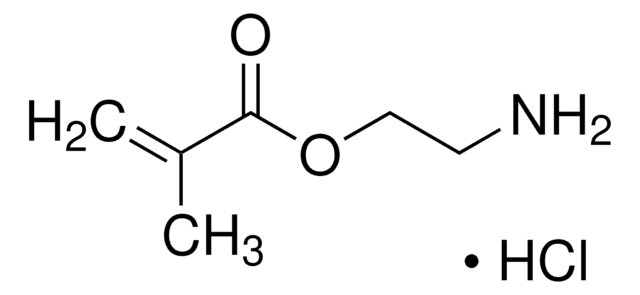
![[2-(Methacryloyloxy)ethyl]trimethylammonium chloride solution 75 wt. % in H2O](/deepweb/assets/sigmaaldrich/product/structures/316/612/66b0f4cf-d060-427d-b4f5-e8fab3e5cffe/640/66b0f4cf-d060-427d-b4f5-e8fab3e5cffe.png)

